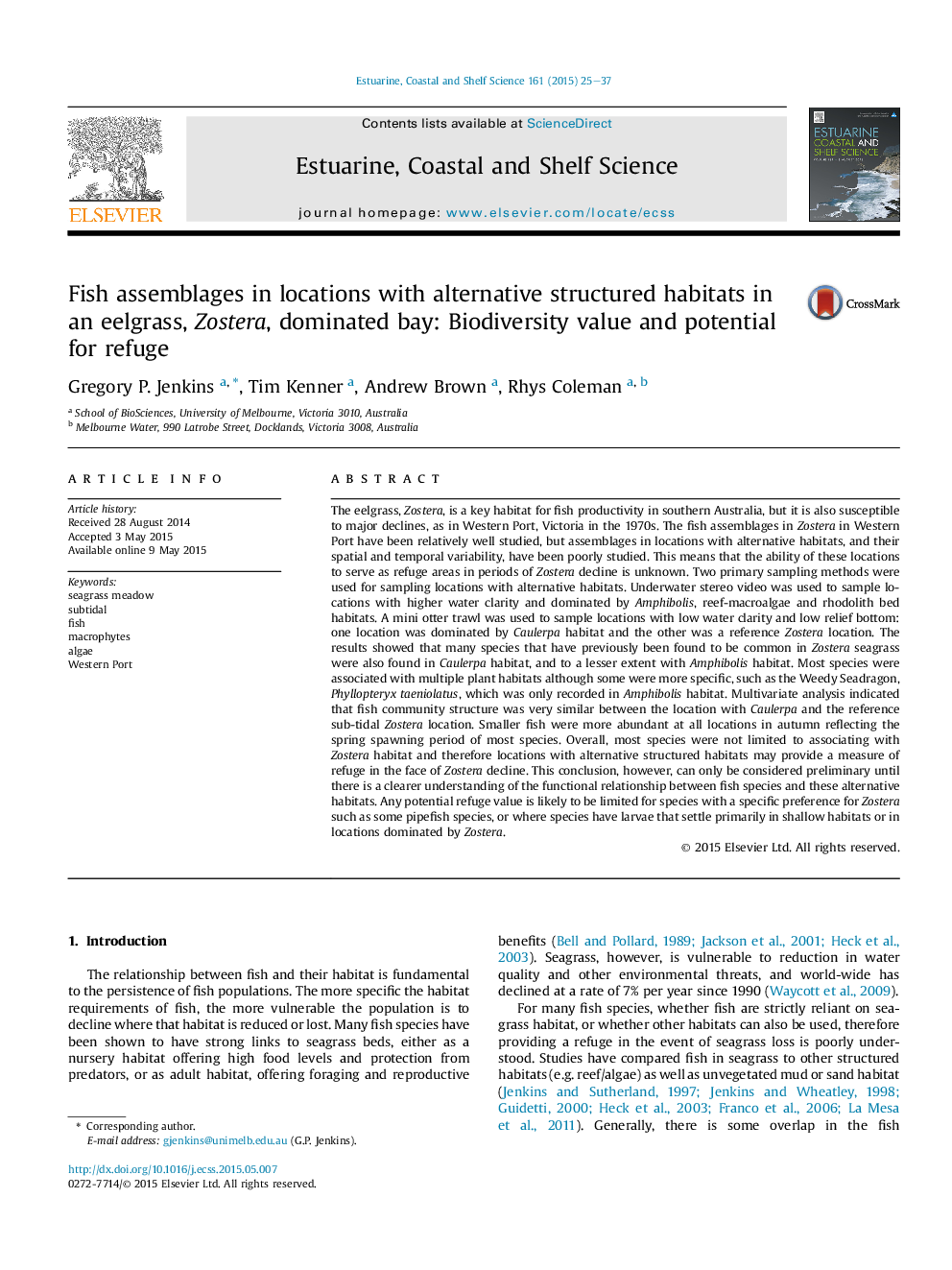| Article ID | Journal | Published Year | Pages | File Type |
|---|---|---|---|---|
| 4539461 | Estuarine, Coastal and Shelf Science | 2015 | 13 Pages |
The eelgrass, Zostera, is a key habitat for fish productivity in southern Australia, but it is also susceptible to major declines, as in Western Port, Victoria in the 1970s. The fish assemblages in Zostera in Western Port have been relatively well studied, but assemblages in locations with alternative habitats, and their spatial and temporal variability, have been poorly studied. This means that the ability of these locations to serve as refuge areas in periods of Zostera decline is unknown. Two primary sampling methods were used for sampling locations with alternative habitats. Underwater stereo video was used to sample locations with higher water clarity and dominated by Amphibolis, reef-macroalgae and rhodolith bed habitats. A mini otter trawl was used to sample locations with low water clarity and low relief bottom: one location was dominated by Caulerpa habitat and the other was a reference Zostera location. The results showed that many species that have previously been found to be common in Zostera seagrass were also found in Caulerpa habitat, and to a lesser extent with Amphibolis habitat. Most species were associated with multiple plant habitats although some were more specific, such as the Weedy Seadragon, Phyllopteryx taeniolatus, which was only recorded in Amphibolis habitat. Multivariate analysis indicated that fish community structure was very similar between the location with Caulerpa and the reference sub-tidal Zostera location. Smaller fish were more abundant at all locations in autumn reflecting the spring spawning period of most species. Overall, most species were not limited to associating with Zostera habitat and therefore locations with alternative structured habitats may provide a measure of refuge in the face of Zostera decline. This conclusion, however, can only be considered preliminary until there is a clearer understanding of the functional relationship between fish species and these alternative habitats. Any potential refuge value is likely to be limited for species with a specific preference for Zostera such as some pipefish species, or where species have larvae that settle primarily in shallow habitats or in locations dominated by Zostera.
